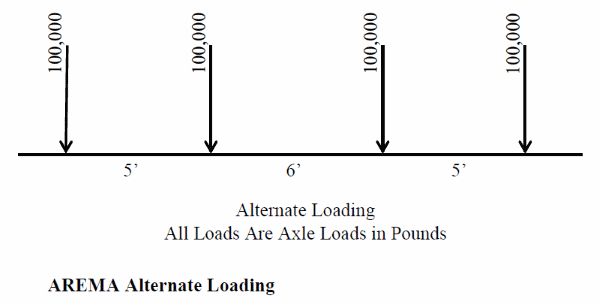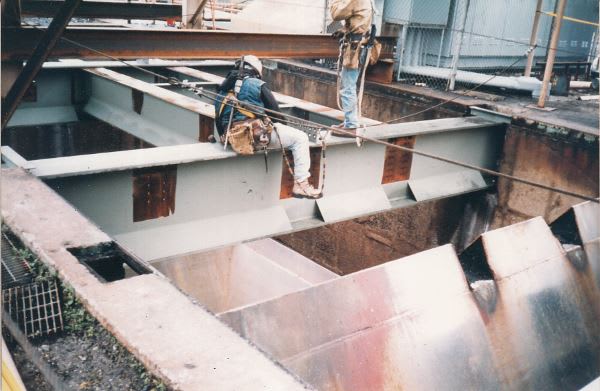LOOKING FOR SOME CONFIRMATION THAT RAILWAY LOADS FOR A COOPER E-80 IS SIMPLY POINT LOADS BEHIND A RETAINING WALL. I CANNOT FIND ANY RULES DICTATING ANY GUIDELINES. SO, I AM USING A COOPER E-80 POINT LOAD (60K) 1 FOOT BEHIND WALL PLUS ANOTHER POINT LOAD (60K) 6 FEET BEYOND THE WALL FACE (5 FEET BETWEEN LOADS) AND THEN ANOTHER POINT LOAD AND THEN ANOTHER POINT LOAD ALL OF WHICH ADD THE OVERTURNING MOMENT IN THE WALL. THESE POINT LOADS ADD TO THE ALREADY IN PLACE BACKFILL LOAD. THERE IS A LOT OF OF INFORMATION ABOUT LOADS RUNNING PARALLEL TO A RETAINING WALL WHERE YOU USE 1800 PSF OR FOR AMTRAK APPROX. 2700 PSF DUE TO THE 50% INCREASE FOR IMPACT BUT I SEE ALMOST NO INFORMATION FOR LOADS PERPENDICULAR TO THE RETAINING WALL OR ABUTMENT.
Tek-Tips is the largest IT community on the Internet today!
Members share and learn making Tek-Tips Forums the best source of peer-reviewed technical information on the Internet!
-
Congratulations cowski on being selected by the Eng-Tips community for having the most helpful posts in the forums last week. Way to Go!
RETAINING WALL DESIGN FOR RAILWAY LOADS 3
- Thread starter alumpkin
- Start date




![[idea] [idea] [idea]](/data/assets/smilies/idea.gif)
![[r2d2] [r2d2] [r2d2]](/data/assets/smilies/r2d2.gif)